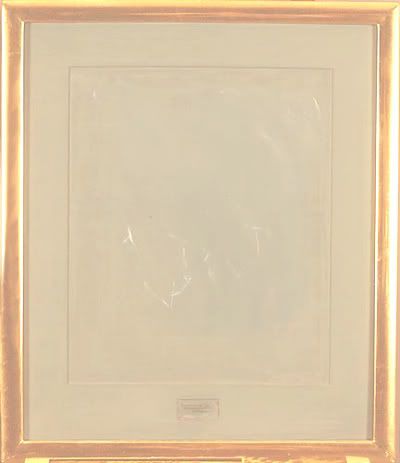
In 1953, Robert Rauschenberg came to Willem de Kooning with a strange request: he asked him for a drawing. Rauschenberg, who was the young rising star of abstract expressionism at the time, brought it back to his studio and then, armed with a handful of good old erasers, he started rubbing it out. A laborious process of erasure that was to take months.
The Erased de Kooning Drawing by Rauschenberg is now exhibited at the Museum of San Francisco.
Eventually, by destroying the drawing he created another work, one with the symbolic authorship of his signature but whose significance and very existence is absolutely relative to the now in absentia de Kooning drawing. The erasure is the most paradoxical artistic act. It is an appropriation of the work and quite literally, it is a sacrifice. It is a (the?) work of art insofar as it bears the trace, the hint of a creative gesture and the destructive gesture of this gesture. This iconoclastic gesture cannot be represented: it constitutes, contructs the art work, which it founds concomitantly as an event.
To Barbara Rose, who asked why he didn’t erase one of his own drawings, Rauschenberg humbly answered that this would have reduced his drawing to nothing. There is the difference: between the nothing that a Rauschenberg drawing would have been and the non-nothing that the Erased de Kooning Drawing by Rauschenberg is. The fervor of a gesture. An act of faith.

